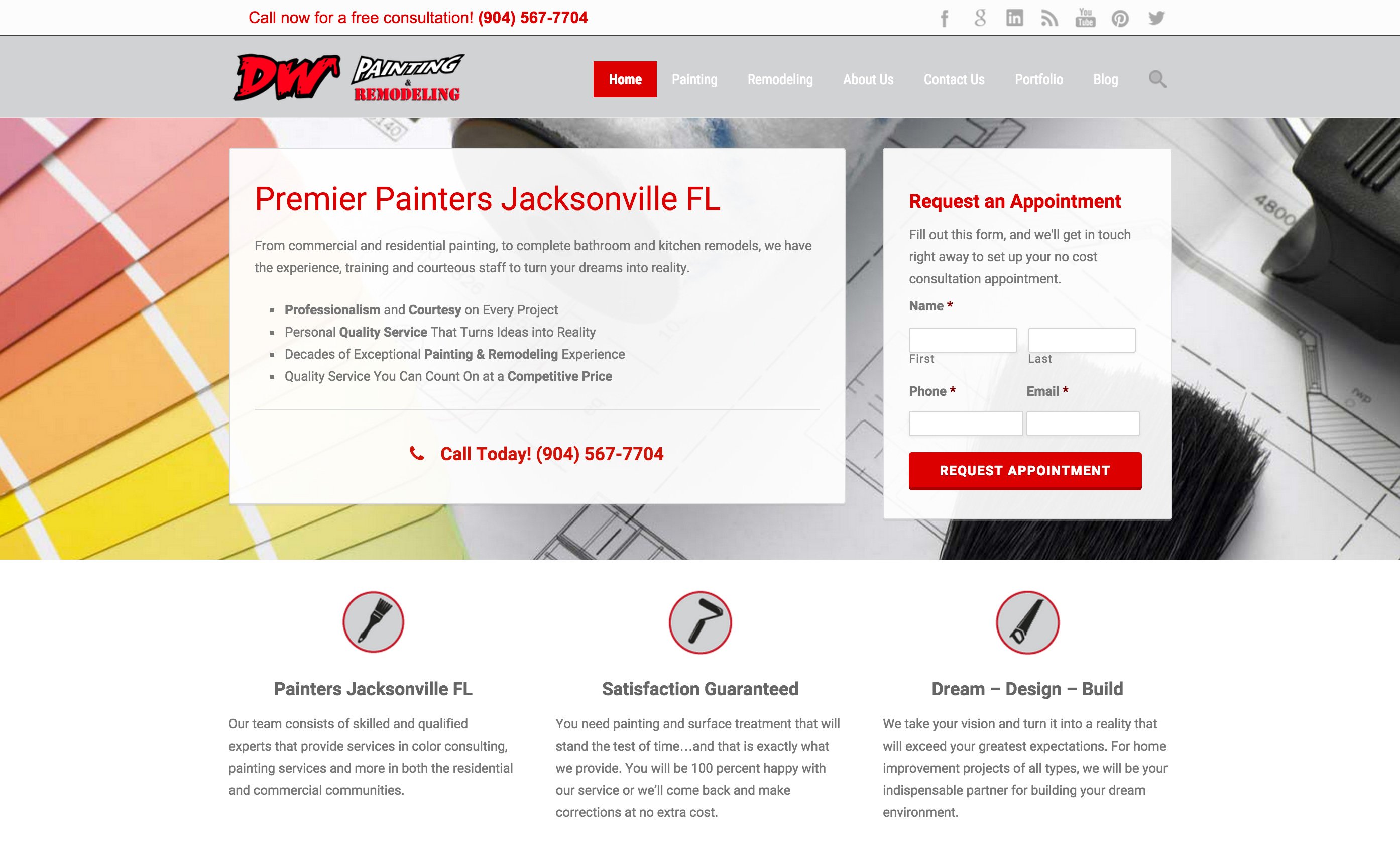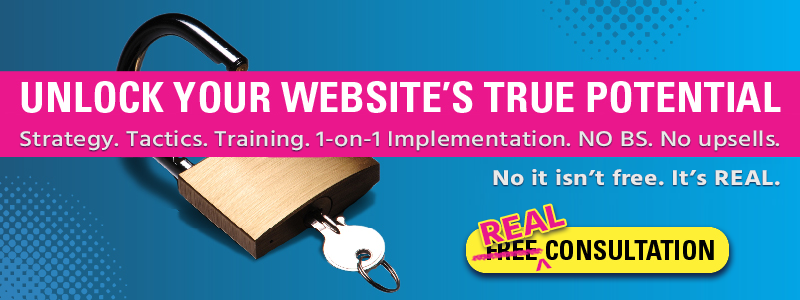Last Updated on July 17, 2018 by
Have you ever considered including a lead-capturing contact form on your website’s main pages to increase your site’s leads and conversions? Or perhaps featuring a Google Maps element and directory listings that are complete and up-to-date with the same information? These are great avenues to explore when your company’s local business website is being analyzed, or when the subject of how to increase website conversions comes up. Take a look at a site of one of our clients:
By adding a call to action on every main service page, they immediately were able to increase website leads and conversions.

Getting a healthy amount of clicks through to your website is a good indicator that you’re doing something right…and that your ads are performing well. But be warned: If the prospective customers clicking through can’t be considered “converts” – i.e. actually buying something from you – your advertising budget is being flushed right down the proverbial pipe. As you as a smart business owner should know, paid advertising should bring in store leads, so it’s vital that you constantly analyze, test and optimize your business’ website.
Let’s take a gander at a few ways to improve your conversion rate and increase increase website leads:
1. Have Relevant Landing Pages
One possible reasoning for a lack of conversions is often that ads are misleading in nature, thus targeting the wrong demographic – for example, you have an ad applauding those about to get in shape, but it leads to a website about supplemental vitamins…people who were looking for workout tips might feel hoodwinked and immediately click away from your site. The moral here: Ensure your ads line up precisely with the content found on the site. Not only will this lead to a higher chance for conversion, it will also keep you from getting “in trouble” with Google. What do we mean by that? Ads that don’t lead to relevant sites are often “punished” with a lower Quality Score, with Google being less likely to serve them in search results.
MVMG Tip: In order to make sure your landing pages are customized and specific to the ads you’re serving, you may have to create dozens of landing pages that align with each of your products or services. Sure, from the outside looking in this seems like a ton of extra work – but believe us when we tell you that it will certainly yield extra payoff; consider that Hubspot routinely reports that businesses with over 40 landing pages get 12 TIMES more leads than those with only one-to-five landing pages.
2. Have Clear Calls-to-Action
If you’ve spent any amount of time around the Multiverse blog boards, you’ve seen us talk about the importance of calls-to-action on a website. If the goal of your ads is to get people to schedule an appointment for your offered service, your website should boast a very clear call-to-action that directs them to make an appointment “immediately,” “soon,” “at (their) convenience” or “now.” Good calls-to-action turn website visitors into customers by making that conversion process simple and accessible – think about it like this: If potential customers land on your site and must sift through paragraphs of text or pages upon pages of information, they may get impatient and give up.
MVMG Tip: Good calls-to-action typically use larger font sizes, contrasting colors and blatant positioning to stand out to a visitor’s eye, making it easy for them to follow-through on the desired action you wish them to take.
3. Include a Live Web Chat
Another driving factor for conversion comes in the form of providing a high-quality experience for your customers. This means, because you cannot provide a friendly smile or firm handshake online, there is really only one way to give your website a more personal feel beyond a spokesperson video…and that’s a live web chat.
According to Econsultancy, 73-percent of people report having the highest satisfaction with web chat as a customer service channel, compared to 61-percent for email and 44-percent for phone contact. What does this mean? The main reason people report being enamored with web chat is its efficiency – they get their questions answered to the point and right away, while still being able to multi-task with their own errands. This accessibility to information speaks to today’s on-the-go customer – which we have discussed in great lengths in these blogs – and could be the one element that allows your business to stand out amidst a sea of competition.
MVMG Fun Fact: Thirty-one-percent of online shoppers reported they would be more likely to purchase after engaging in a live chat.
4. Consider What Kinds of Leads You Need
Trust us: Great marketing needs laser-like focus. The first thing you need to decide is what you want your visitors to do once they arrive on your site – should they sign up for your email newsletter, fill out a consultation request, or request more info about your product? Decide on one primary goal and make it obvious.
Before you decide, ask yourself a few questions:
- Who is my primary audience?
- What kind of leads do I want to capture?
- Of those leads, what is their primary function on my site?
- What would best motivate them to leave their contact information behind?
- What methods of communication will they prefer – email? Phone?
- What is my system for handling new leads once they arrive?
As we briefly touched on in the beginning of this post, leads generated through a contact form – also known as a “request a bid” form – usually come with the advantage of including a lot more information than just an email address…but they can also be far more difficult to gather. Still, make no mistake: These leads are highly valuable and certainly worth striving for, and we can tell you that leads generated in this fashion are FAR more likely to actually turn into dollars when compared to a simple email address.
5. Make Sure You’re “On the Map”
How many potential customers are going to scroll all the way down to the bottom of a search results page to find your actual website? We can tell you nowhere near as many as are likely to click on the map or directory listings, all of which are more prominently positioned at the top of the search results page.
MVMG Tip: It’s important to make sure you’re watching these listings on a regular basis and optimizing your presence in the map and directory sites.
The primary element to get right here is that your listed information is CORRECT. Incorrect and/or incomplete information is almost as bad as having none at all.
Managing your business within the layers of these tactics needs to be part of your SEO strategy – in other words, it’s not a one-time task. By trying these suggestions we outlined by incorporating them into your overall strategy, you will be able to build your customer base and grow your business.
